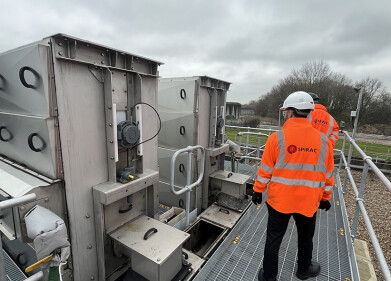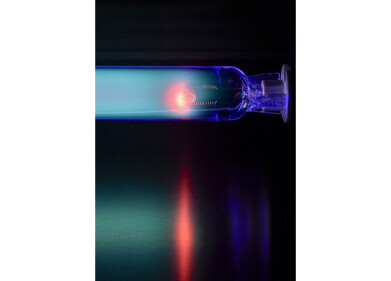Water/Wastewater
Membrane Contactors Enable Refinery to Build Mobile Deoxygenation Systems for Boiler Feedwater Capacity Upgrade
May 31 2013
Membrana-Charlotte (USA), a Division of Celgard, LLC, have announced that their Liqui-Cel 8 x 80-inch Membrane Contactors have been selected as the deoxygenation technology for full-scale installation in two boiler feedwater capacity upgrade projects at a refinery in Turkey. The first system includes twenty-two 8x80-inch Liqui-Cel High Pressure Contactors in a stacked, parallel configuration, which will process 200 m3/hr (880 gpm). The second system uses eight membrane contactors and will process 80 m3/hr (352 gpm). Both systems are expected to reduce dissolved O2 levels from saturation down to 2 ppb, according to customer specifications, and based on results from a successful year-long pilot phase. The membrane contactors have shipped and the systems are expected to start-up in Q2 of 2013. The systems were designed by EKE Industrial Plants Cons. Co. located in Istanbul.
Liqui-Cel High Pressure Contactors were selected because the customer required a reliable degassing system that could also be easily transported to other locations. The requirement for mobility also limited the space that a system could occupy because the skids are loaded onto vehicles for transportation. The space available for future installation of new equipment for capacity increases was also limited. Additionally, the degassing system needs to handle pressure up to 7 bar and temperatures up to 50 C.
“We are extremely pleased with the recognition the 8x80-inch Liqui-Cel Contactor has received since its launch,” states Chad Schuchmann, Liqui-Cel Membrane Contactor VP. “Moving ahead to a full-scale installation just adds to the product’s continuing momentum and validates our belief that this product meets the need for a compact, cost-effective and efficient method of deaeration in applications with elevated pressures.”
The 8x80-inch Liqui-Cel High Pressure Contactor is a patent pending product that was introduced in late 2011. It has received considerable interest due to its innovative design and superior performance in deoxygenation applications. This product is currently being evaluated and considered in several other pilots and projects for dissolved oxygen removal of injection water on offshore platforms, boiler feedwater, refining and in many other industries and applications.
Membrana-Charlotte combines application knowledge and Liqui-Cel Membrane Contactor technology expertise to provide innovative separation solutions. Liqui-Cel Membrane Contactors have low energy requirements and can reduce chemical use which contributes to low operating costs and supports customer sustainability objectives. Liqui-Cel Contactors are modular and compact and can achieve very low dissolved gas outlet concentrations. They are rapidly replacing older deaeration technologies as the product of choice in power generation, semiconductor, hydrocarbon, food and beverage, pharmaceutical, analytical/biotechnology and many other industries. Liqui-Cel Membrane Contactors also operate cleanly and require a much smaller footprint compared to other technologies. These devices have processed over 620,000 m3/hr (2.7 million gpm) of liquids worldwide and have been operating in a variety of applications for over 20 years.
Thousands of microporous hollow fibers are incorporated into Liqui-Cel Membrane Contactors that add or remove oxygen (O2), carbon dioxide (CO2), nitrogen (N2) and other gases to or from different liquids. In typical operation, liquid flows across the membrane hollow fiber array. A strip gas or vacuum, either separately or in combination, is applied on the lumenside of the hollow fibers. Because of its hydrophobic nature, the membrane acts as an inert support to allow direct contact between a gas and liquid phase without dispersion. The dissolved gas in the liquid travels through the pore by applying a higher pressure to the liquid stream relative to the gas stream.
Dissolved CO2 removal from water can improve Ion Exchange (IX) and EDI/CDI efficiency after RO. For example, In EDI/CDI systems, excess CO2 can lead to the formation of ionic species that contribute to the total ionic load of an EDI unit, resulting in higher conductivity. In IX systems, reducing dissolved CO2 concentration lowers bed regeneration frequency resulting in more efficient operations. Chemical consumption, such a NaOH, can also be reduced in double pass RO systems.
O2 also negatively impacts many processes; it is corrosive and can oxidise water treatment system components. In the power and industrial areas, piping and equipment are susceptible to corrosion. In the semiconductor and ink markets, high levels of dissolved gases can cause lower yields and slower process speeds. Liqui-Cel Contactors are also used to add gases to liquids to enhance megasonic cleaning. The beverage industry utilises membrane contactor technology for carbonation, nitrogenation and deoxygenation. These applications are only a few examples of the many opportunities where Liqui-Cel Membrane Contactors can be used for gas transfer. Membrana’s Industrial & Specialty Filtration Business also manufactures a variety of membranes and devices used for filtration in various industries and applications.
Events
May 23 2024 Beijing, China
May 23 2024 Beijing, China
Jun 10 2024 Algiers, Algeria
Jun 10 2024 Frankfurt, Germany
Singapore International Water Week | Water Expo
Jun 18 2024 Singapore













